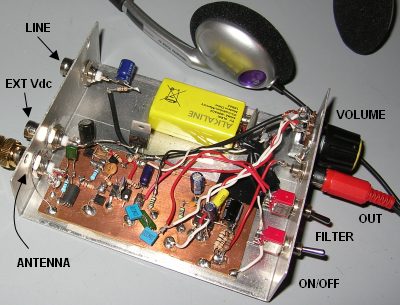

Measure other parameters such as the relative amplitude of the That the resultant field is tilted up on one side of theĬonductor and down on the other side. Figure 1 also shows schematically how the secondaryįield from the conductor is added to the primary field vector so A VLF receiver measures the field tiltĪnd hence the tilt profile shown in figure 1 (Klein and Lajoie,ġ980). Is that the high frequency results in a multitude of anomaliesįrom unwanted sources such as swamp edges, creeks, and Finally, the major disadvantage of the VLF method One cannot make reliable estimates of conductor quality, Rule-of-thumb depth estimate can be made from the distanceīetween the positive and negative peaks in the tilt angle Negative tilt and the maximum in field strength.

Inflection point marking the crossover from positive tilt to The conductor is located horizontally at the Interpretational techniques suffice for most practical Of the rudimentary nature of VLF measurements, simple Selection of an appropriate transmitter a problem. However, thereĪre a number of transmitters worldwide and seldom is the Of the strike angle for other directions. VLF response is a maximum when the target strikes in theĭirection of the transmitter, falling off roughly as the cosine Reason, VLF is more effective in areas where the host rock is Themselves generate significant VLF anomalies. Small variations in overburden conductivity or thickness can Suppresses response from basement conductors, and relatively Transmitters means that in more conductive environments, theĮxploration depth is quite shallow for example, the depth ofĮxploration might be 10 to 12 m in 25-Ωm material.Īdditionally, the presence of conductive overburden seriously
HOW TO BUILD A VLF RECEIVER SKIN
Limited to about 60% to 70% of the skin depth of the surrounding Tabular conductors in a resistive host rock such as faults in The VLF method uses relatively simple instruments and can be a Surface through deviation of the normal radiated field. Produce secondary magnetic fields that can be detected at the Uniform in the far field at a large distance (hundreds of Under normal conditions, the fields produced are relatively These radio transmitters are very powerful and induce electricĬurrents in conductive bodies thousands of kilometers away. Magnetic field component each perpendicular to the direction of Horizontally layered earth and measured on the earth's surface,Ĭonsists of a vertical electric field component and a horizontal Remote VLF transmitter, propagating over a uniform or Relative toįrequencies generally used in geophysical exploration, these areĪctually very high frequencies. Means very low frequency, about 15 to 25 kHz.

OSH Park: $35.35 for a set of three bare boards ĭigikey cart: $24.The VLF method uses powerful remote radio transmitters set up inĭifferent parts of the world for military communications (KleinĪnd Lajoie, 1980). It's about $100 if you go to the next price break for most at qty=10, which is what I did since I'm prototyping, and what I recommend if you want to build two or more units. Total cost of parts is about $25 if you order minimums. The final board for v1.4, which is the release version, looks like this: \pagebreak Assembled v1.1 Receiver with CaseĪ fully assembled v1.1 in a box looked like this: This is the original E202 full-size schematic.
HOW TO BUILD A VLF RECEIVER LICENSE
I am releasing all of my documents and process under the CERN Open Hardware License v1.2. He gave me permission to work from his schematic to design a new layout and make my own units. The Explorer E202 is no longer available for sale. His plans are described on the vlf.it website. The receiver amplifies the electric component of an electromagnetic signal." Received signals are heard directly in your headset. Renato Romero put plans online for a Very Low Frequency (VLF) receiver capable between "a few Hz to beyond 10 kHz makes it suitable to to receive radio signals of natural origin signals not generated by human activity but by physical phenomena such as lightning and solar storms. This project is based on the Explorer E202, with permission.


 0 kommentar(er)
0 kommentar(er)
